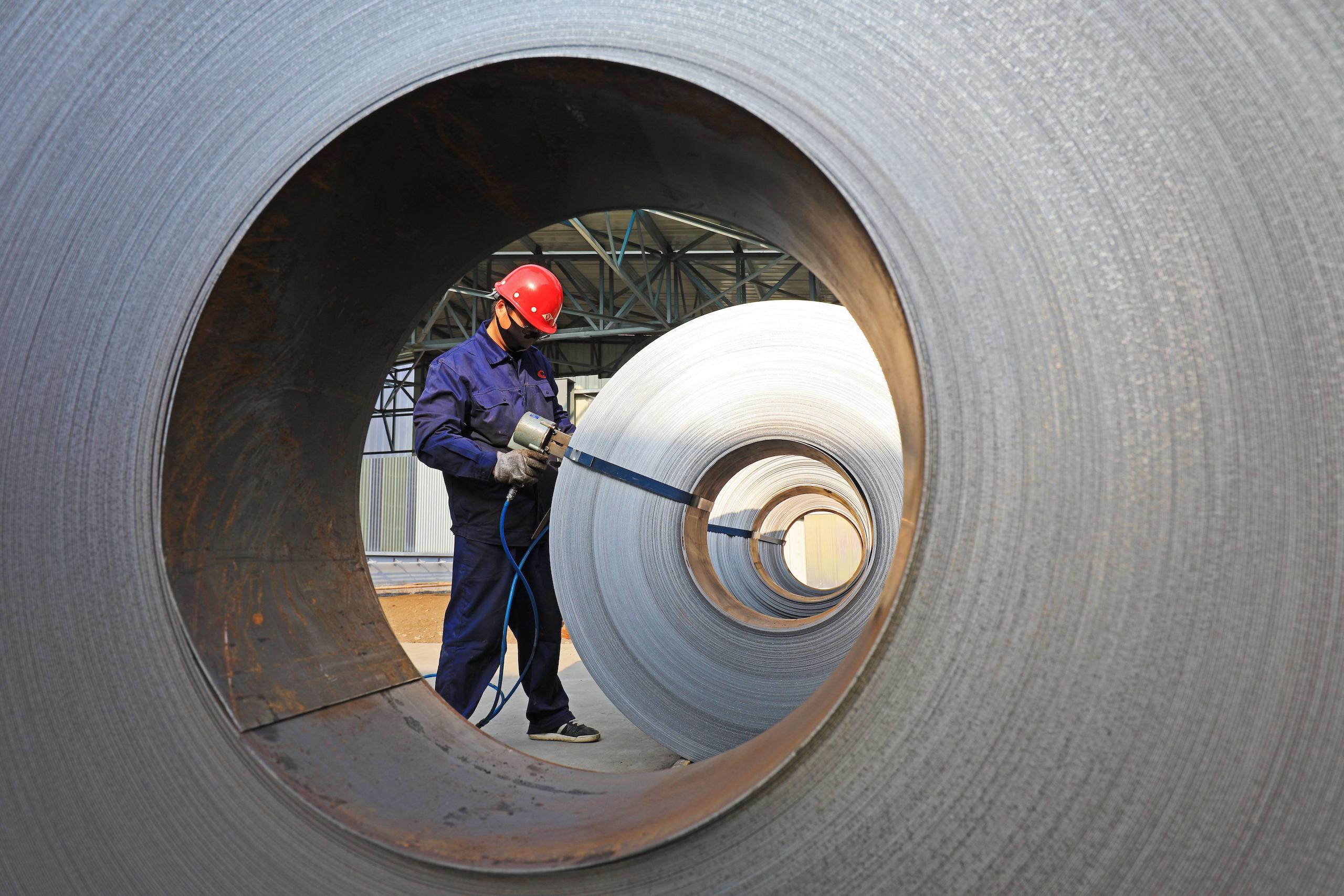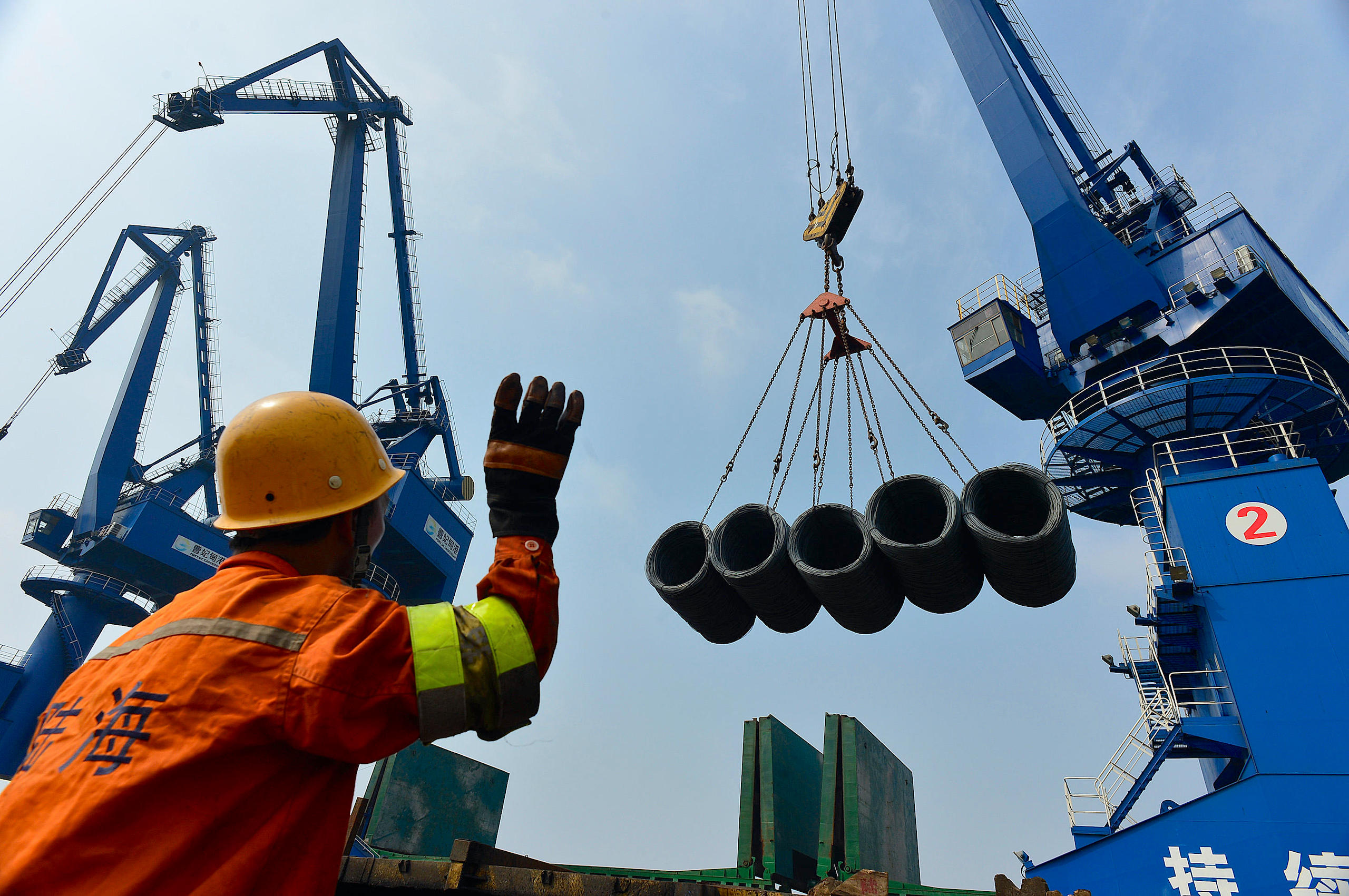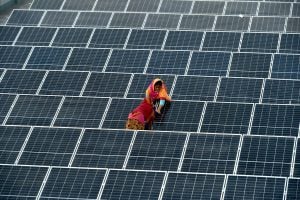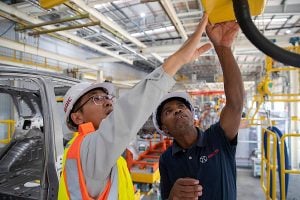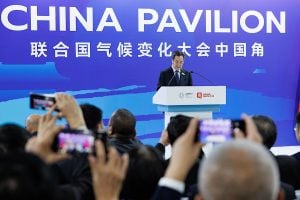On 23 August, China’s Ministry of Industry and Information Technology (MIIT) issued a notice suspending new steelmaking production projects while it reviews a policy that aimed to control overcapacity in the sector.
The capacity replacement policy, introduced in 2014, required steelmakers to offset new production projects by retiring outdated equipment. As well as easing overcapacity, it was hoped this would modernise equipment and processes, reduce pollution and, since 2020, cut carbon emissions. Its suspension follows mixed results, and raises questions about the future of China’s steel industry.
Steel production accounts for around 15% of China’s carbon emissions. And while the capacity replacement policy has helped phase out older, more polluting facilities, production of crude steel has continued to rise. The suspension could therefore curb overcapacity in the short term, but it also risks stalling essential decarbonisation initiatives, such as the shift towards electric arc furnaces (EAFs), which are less carbon-intensive.
Tracing the development of Hubei’s steel industry – China’s leading steel-producing province – it’s possible to analyse the impact of capacity replacement and what its suspension might mean for the industry’s future.
The industry is going green, but expansion hasn’t stopped
In 2014, the MIIT issued a notice on implementing capacity replacement for industries with severe overcapacity, including steel, cement, and aluminium. This was a response to State Council guidance on resolving overcapacity and to its air pollution action plan. Over the past decade, the MIIT has published four capacity-replacement policies to guide industry development.
The steel industry has been a key focus of this capacity replacement policy, with Hebei province playing a central role. As the saying goes: “The world looks to China for steel, and China looks to Hebei.” In 2023, Hebei produced 210 million tonnes of crude steel – 21% of the nation’s output – according to the China Iron and Steel Association.
The capacity replacement policy has significantly shaped the concentration, structure, and modernisation of Hebei’s steel industry. The number of steel companies in the province has fallen from a peak of 123 in 2011 to 39 today, with the top 10 companies now accounting for 70% of the province’s production capacity.
Hebei’s industry is structured around transporting steel by rail to seaports for export, with crude steel production concentrated in eight main cities – Tangshan, Handan, Qinhuang Island, Shijiazhuang, Chengde, Cangzhou, Xingtai, and Xinji.
Hebei has used the replacement policy to phase out outdated production capacity, improve its industrial scale, and enhance environmental performance. By March 2024, 37 steel companies had an A-grade environmental rating, and 38 factories met national green standards – making Hebei a national leader in these areas.
However, these policies could not curb a steady rise in Hebei’s crude steel output. Several years of capacity data show how, from 2011, the province’s production continued to grow rapidly, and that in 2014, 2015, and 2017, the policies were unable to contain this upward trend.
It was not until 2021, when stricter output control policies were introduced, that Hebei’s production started to fall, though it has remained at a relatively high level.
In theory, capacity and output should be closely correlated. However, the use of more efficient technologies through capacity replacement has resulted in increased steel production without a rise in capacity. On top of this, some of the facilities being retired have reportedly been idle for years, meaning production capacity increases when the new facility goes live. As a result, the connection between designed capacity and actual output has weakened over time, making it harder to align policy with reality.
Other issues have also hampered the effectiveness of capacity replacement, such as poor information disclosure; errors in local capacity appraisals; departmental coordination barriers; flaws in policy implementation; and lax supervision and penalties.
The effects of suspending capacity replacement
The market for steel remains sluggish. The price of Chinese steel products has fallen in the past four years, with profits nearing zero, according to data from Bloomberg New Energy Finance. If capacity growth continues, oversupply will further increase the competitive pressure on the industry.
Under current industrial policy, the construction of new iron-making and steel-making equipment needs to be achieved through capacity replacement. This is why suspending capacity replacement can curb capacity expansion in the short term.
However, the suspension will also affect key decarbonisation efforts in the steel industry, such as the adoption of electric arc furnace (EAF) steelmaking. EAFs use mainly scrap steel and electricity, reducing both the production process and carbon emissions compared to blast furnaces, which rely on coal to smelt iron ore.
Since 2022, the government has published several policies aimed at increasing the share of EAF steelmaking. These include policies on: carbon peaking in the industrial sector; pollution and emissions reduction; energy conservation; high-quality development of the steel industry, and energy and carbon reduction in the steel industry. However, with the suspension of capacity replacement, businesses will no longer be able to replace older capacity with EAFs.
That said, the suspension will have a limited impact on reducing carbon emissions in the short term because most new steel capacity in China still uses the blast furnace process. In 2023, EAFs accounted for 10% of total production, well below the 2025 target of 15%.
Steel’s decarbonisation: A pressing issue
Although the suspension of capacity replacement is likely to have a limited short-term impact, given companies’ current willingness to transition and market dynamics, the urgency of decarbonising the steel sector remains pressing if China is to meet its emissions reduction goals and commitments. China needs to introduce new capacity replacement policies that drive the sector towards a low-carbon future as quickly as possible.
A sluggish real-estate market means that demand for building resources has been falling. Many steel companies have already begun adjusting away from low-margin real estate and infrastructure steel products, towards higher-value products like precision machinery parts and automotive materials. However, this shift is more about extending production chains than embracing low-carbon technologies, meaning it’s quite different from the low-carbon transition we expect for the steel industry.
At present, market demand does not exist for green steel given its higher cost, which in turn makes steel companies hesitant to invest in low-carbon technologies. Even though government departments have already proposed targets for increasing the proportion of low-carbon smelting and steelmaking, companies have been slow to decarbonise through capacity replacement. The larger challenge now is how to guide the market and companies so that the steel industry meets its decarbonisation goals.
In September, the Ministry of Ecology and Environment released a draft work plan for public consultation that will bring the steel industry under national carbon market controls by the end of 2024. To meet the regulatory requirements, the industry will need to replace a lot of old, high-carbon equipment, while working to achieve the broader goals of carbon and pollution reduction.
Given the urgency of reducing carbon emissions, the suspension of capacity replacement should not be prolonged. The relevant authorities should update and quickly introduce new policies to promote a low-carbon transition in the steel industry. New measures could include stopping the approval of new blast furnaces, which have high emissions, and lowering the barriers for adopting greener smelting technologies.
The idea of stopping approval for new blast furnace projects has been discussed within the industry for some time. Blast furnace capacity is already sufficient to meet domestic demand, and most of the furnaces are relatively young. Continuing with approvals would send the wrong signal to the industry, slow down the progress of the low-carbon transition, and increase the risk of stranded assets for companies.
The industry has seen similar pauses in capacity replacement before. The first lasted for a year and a half and caused significant difficulties for some companies in adapting to the ultra-low emission retrofit requirements at that time. Back then, the government’s timeline for companies to complete ultra-low emission upgrades was tight, and the pause in capacity replacement meant some companies were unable to update their equipment in a timely manner through capacity replacement.
